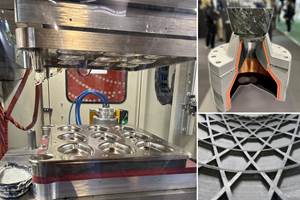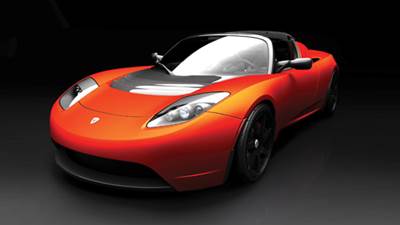Negating negatives
Composites Technology magazine's editor-in-chief Jeff Sloan says the April issue's cover story on startup electric car makers is proof that there are serious carmakers willing to give composites more than a serious look.
Last year, as the editors of CT gathered to discuss possible stories for 2010, one of the standouts was a feature on use of composites in the throng of new and newly redesigned all-electric and hybrid-electric vehicles announced in the last few years by startup car companies. It’s not that we haven’t covered EVs before — you can go back as far as January/February 2000 for an article in which we profiled the Corbin Sparrow, the all-electric one-seater eventually acquired by what is now Myers Motors. And in June 2007, we examined the design of the carbon-composite body panels on Tesla Motors’ Roadster (see "Not your father's EV," under Eidtor's Picks," at right). But it was clear that the time was right for more.
We assigned the story to contributing writer Peggy Malnati, our automotive specialist and one of the principal organizers of the annual SPE Automotive Composites Conference and Exhibition. At 4,600+ words, the resulting article (see "Quiet revolution ...." under "Editor's Picks," at right) is proof that you have to be careful what you wish for. It’s also proof that composites use among startups in the car market is substantial and, potentially, very meaningful — especially because we cover only five of more than two-dozen startups, many of which have turned to composites to lightweight their vehicles.
Unfortunately, this activity, however promising, doesn’t negate concerns that nag the composites community about the viability of its materials in production cars and trucks. These are variations on the “too” theme: Composite materials cost too much, composite manufacturing process cycle times are too slow and, in the case of carbon fiber, the supply is too inconsistent. Set against the auto industry’s dependence on legacy steel and aluminum, the barriers to composites can seem insurmountable. Still, as Peggy’s story shows, there are serious carmakers willing to give composites more than a serious look.
With all this in mind, I attended ÂÌñÏ×ÆÞ’s Investment Forum (March 15-16, La Jolla, Calif.), where a variety of industry gurus briefed attendees on current and potential use of composites in wind, aerospace, infrastructure, construction and, yes, automotive applications. Although they repeatedly acknowledged the hurdles I listed above, they also repeated a caveat: Composites in general, and carbon fiber in particular, might gain traction if an automaker follows the aerospace model, establishing a long-term, stable carbon fiber source and coupling that with an innovative, high-speed manufacturing process.
In this vein, one name came up more than once: BMW. The Germany-based auto OEM — not a startup — has entered into a joint venture with SGL Group to build BMW’s Megacity all-electric production vehicle. SGL will produce the fiber in North America and weave it into fabric in Germany. BMW will use the fabrics to mass-produce composite parts, introducing the car in 2013. BMW gets it. That was the sentiment of one speaker at the Forum, who noted that the BMW/SGL combination is designed to provide exactly what is needed: A long-term, reliable carbon fiber source for a vehicle designed from the start with carbon-fiber composites in mind.
This venture is bold and certainly not without its risks, but we trust that it will prove successful and won’t be the last of its kind. I look forward to assigning the article on the Megacity commuter car — one of many articles, I hope, on the growing and pervasive use of composites in series-production automobiles.
Related Content
Welding is not bonding
Discussion of the issues in our understanding of thermoplastic composite welded structures and certification of the latest materials and welding technologies for future airframes.
Read MoreJEC World 2024 highlights: Thermoplastic composites, CMC and novel processes
CW senior technical editor Ginger Gardiner discusses some of the developments and demonstrators shown at the industry’s largest composites exhibition and conference.
Read MoreThe potential for thermoplastic composite nacelles
Collins Aerospace draws on global team, decades of experience to demonstrate large, curved AFP and welded structures for the next generation of aircraft.
Read MoreBladder-assisted compression molding derivative produces complex, autoclave-quality automotive parts
HP Composites’ AirPower technology enables high-rate CFRP roof production with 50% energy savings for the Maserati MC20.
Read MoreRead Next
Quiet revolution: Composites in EVs
Startup automakers make use of composite body/chassis components to extend the range of hybrid-electric and battery-electric vehicles.
Read MoreEngineering Insights: Not Your Father's EV
A stylish composite body makes the world's first all-electric sports car not only lean and green but efficient and fast as well.
Read MoreUltrasonic welding for in-space manufacturing of CFRTP
Agile Ultrasonics and NASA trial robotic-compatible carbon fiber-reinforced thermoplastic ultrasonic welding technology for space structures.
Read More












